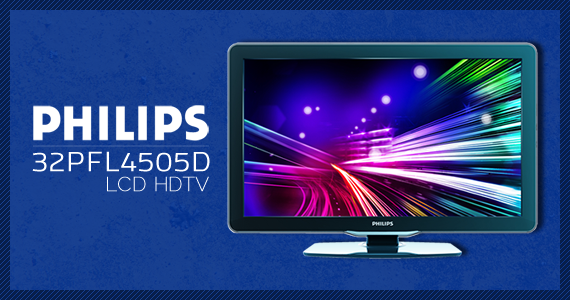This detailed consumer electronics review examines Philips' budget-friendly 32PFL4505D LED HDTV during the transitional period when LED backlighting was becoming mainstream in affordable television sets. Marc Angeli provides a practical perspective from someone upgrading from older LCD technology, seeking a quality 32-inch LED TV under $600 that would work with existing universal remotes and provide improved picture quality. The review captures the 2011 television market when LED technology was still considered a premium feature worth highlighting in marketing and consumer decision-making.
The technical analysis covers the display's Full HD 1920x1080 resolution, 450 cd/m² brightness, 8ms response time, and impressive 4000:1 contrast ratio that LED backlighting enabled. Angeli details the connectivity options including three HDMI ports, dual A/V inputs with S-Video, USB media playback features, and digital audio output, while noting limitations like the lack of VGA/DVI support for older computers and restricted component video inputs. The review provides practical setup experiences with different devices including DVD players, Nintendo Wii, PVRs, and computers, highlighting real-world connectivity challenges consumers faced when transitioning between analog and digital device ecosystems.
The performance evaluation addresses initial concerns about "tinny sound" found in other reviews, demonstrating how proper audio equalizer settings could achieve acceptable sound quality for the price point. Angeli examines the USB media playback limitations (no video file support) and praises the multiple HDMI resolution support for computer connectivity. The $350 purchase price evaluation positions this TV as excellent value for money, competing effectively with more expensive LED models while acknowledging some connectivity compromises typical of budget-oriented designs.
This review documents the democratization of LED television technology when it was transitioning from premium to mainstream pricing, capturing consumer priorities and expectations during this crucial market shift. Looking back 13+ years later, the 32PFL4505D represents the early wave of affordable LED TVs that made high-quality displays accessible to average consumers, establishing expectations for picture quality that drove industry-wide adoption. The connectivity challenges documented here reflect the complex transition period when households contained mixtures of analog and digital devices, requiring careful consideration of input options that are largely irrelevant today with standardized HDMI connectivity. The $350 price point for a 32-inch LED TV now seems remarkably reasonable compared to current pricing, though the lack of smart TV features that became standard within a few years highlights how rapidly television features evolved. This review also captures consumer behavior patterns when LED backlighting was a important purchasing factor, before it became ubiquitous and other features like smart features, HDR, and streaming connection became primary differentiators in television selection.
This summary was created by Dave Rogers. The original post was written by Marc Angeli and published on October 1, 2011.
If you'd like to view the original post, you can find it here.
